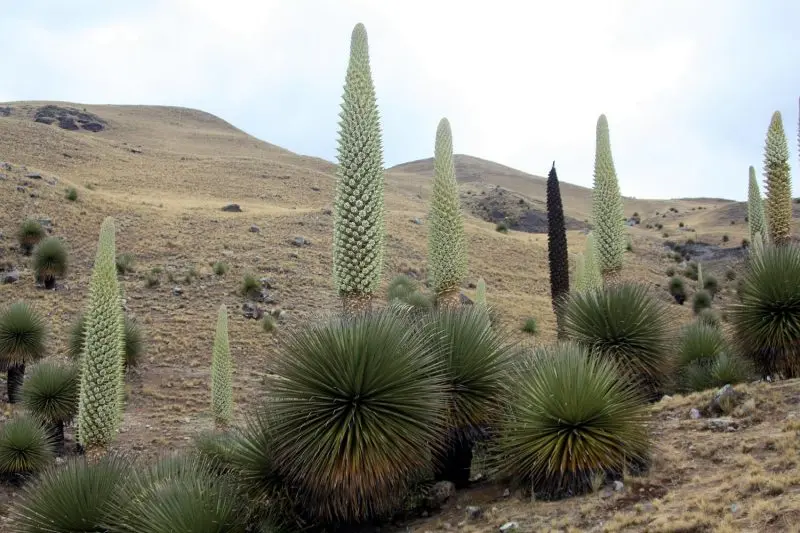Who is the true ruler of the Andes? One might assume that the majestic mountains of South America are governed by the seven countries through which they stretch. But that’s not the case: researchers believe that the real queen of the Andes is the charismatic, massive plant Puya raimondii. This remarkable species is adorned with countless flowers, blooms only once a century, and has a long lifespan. So, what exactly is Puya raimondii? It is a species of monocot flowering plant and the largest member of the bromeliad family (Bromeliaceae), which also includes pineapples. However, P. raimondii is by no means a pineapple. The enormous inflorescence of the Queen of the Andes can reach up to 40 feet tall. The plant was first described in 1830 by French naturalist Alcide d’Orbigny, but it wasn’t classified until 1874, when scientist Antonio Raimondi named the giant flower Pourretia gigantea. In 1928, the plant was reclassified into the genus Puya and was later named in honor of Raimondi, as reported by IFLScience.
Where can you find Puya raimondii? As noted earlier, this remarkable plant graces the Andes, the longest continental mountain range in the world. Moreover, this species is endemic to a rather limited area. If you’re lucky, you can find this giant exclusively in Peru and Bolivia, at elevations ranging from 9,800 to 15,700 feet. More than half of the Puya raimondii population is concentrated in the Titankayoc Regional Reserve in Peru, which boasts over 450,000 specimens of the species. The rest are scattered throughout the Andean mountains.
What makes the Queen of the Andes so special? The plant’s charisma lies not only in its size or infrequent blooming. Researchers suspect that it may also be “proto-carnivorous,” meaning it can trap and kill small animals, although it is unable to digest them. After all, why not? Rumor has it that another plant of the same genus, Puya chilensis, even catches sheep. However, scientists need to conduct further research to confirm this theory. Another indicator of the uniqueness of Puya raimondii is its relatively long lifespan. Typically, its life cycle lasts 80 to 100 years, which can even exceed that of a human. The Andean giant blooms only once—at the end of its life. So, it’s no surprise that it puts on a spectacular show: it becomes covered in countless white flowers, producing up to 12 million seeds. After its death, it remains standing upright for several years.

